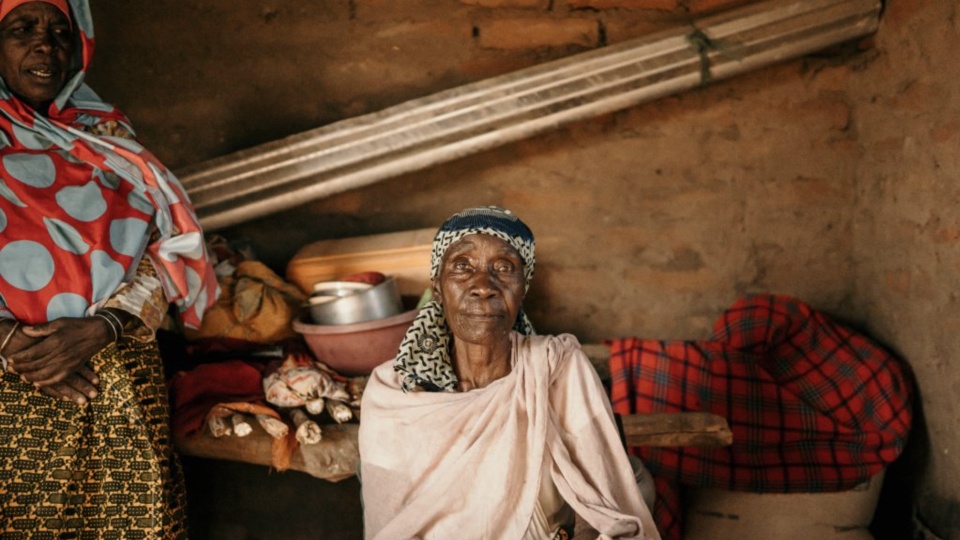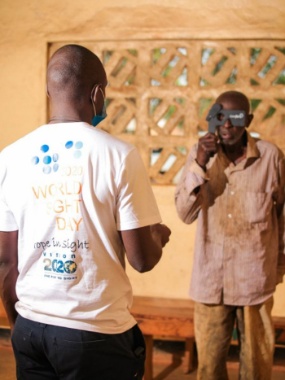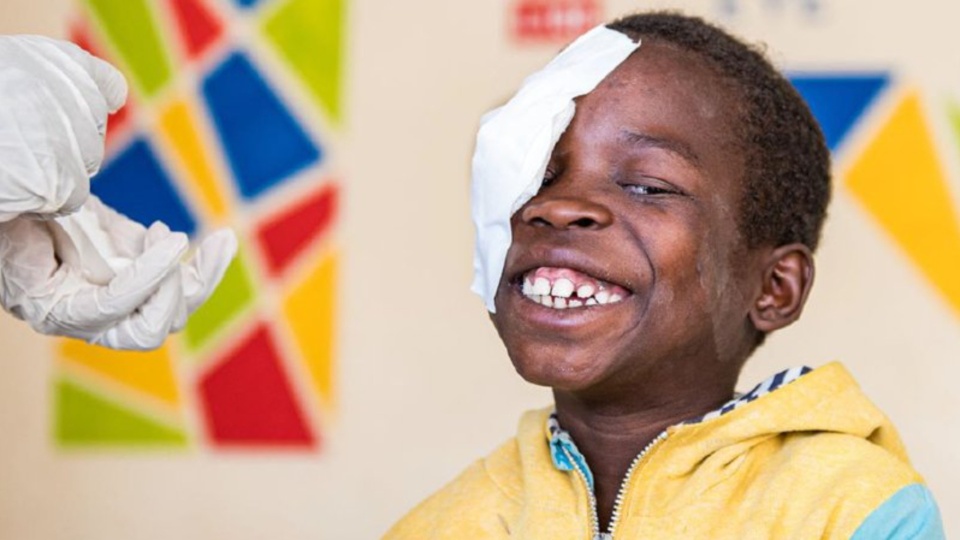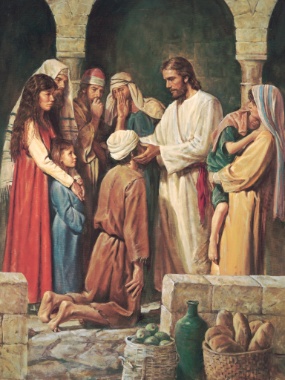
Vision-Latter-day-Saint-Charities
A row of patients in Ghana who received cataract removal surgery under the auspices of Latter-day Saint Charities and its global partners. Photo provided by Annie Kirk, courtesy of Church News.All rights reserved.This story appears here courtesy of TheChurchNews.com. It is not for use by other media.
By Jason Swensen, Church News
A quote attributed to the American scientist George Washington Carver teaches, “Where there is no vision, there is no hope.”
Halima, an elderly woman from a small village in Tanzania, would surely understand Carver’s observation in a deeply personal way.
Several years ago, Halima started going blind after developing bilateral cataracts. Even basic tasks, such as climbing out of bed, were difficult. Soon she was dependent on a niece for full-time care.
Eventually, Halima was completely blind. She remembers feeling like she was in a deep, perpetual sleep, waiting each day to awaken.
“I just want to be independent. I was my whole life, but now I feel totally useless,” she said at the time.
Then a miracle visited Halima and her family. The Tanzanian woman was identified by Latter-day Saint Charities and its local partners in her East African country as a candidate for free cataract surgery. Working under the auspices of the Church’s global vision initiative, a team of seasoned medical professionals performed Halima’s procedure.

Vision-LDS-Charities
Halima, a villager from Tanzania, had her sight restored thanks to cataract surgery provided by Latter-day Saint Charities and its partners. The donated procedure allowed Halima and her family to enjoy increased self-sufficiency. Photo by Latter-day Saint Charities, courtesy of Church News.All rights reserved.Cataract removal surgery is a safe, common and inexpensive surgery. It enjoys a high and almost immediate success rate. But for patients such as Halima, the Church-sponsored surgeries are never commonplace. They are game changers.
Simple, vision-restoring surgeries impact individuals and their families in positive ways for generations. Post-operative cataract patients such as Halima — along with their caregivers — often rediscover self-sufficiency, economic freedom and the simple joy of watching life unfold in clear focus.
Improving Lives — One Eye at a Time
There are several reasons why Latter-day Saint Charities prioritizes its ongoing vision care initiative.

Vision-LDS-Charities
A volunteer with Orbis International, a partner of Latter-day Saint Charities, performs an eye screening on a man in Zambia in October 2020. Photo by Latter-day Saint Charities, courtesy of Church News.All rights reserved.For starters, more than 770 million people worldwide have vision loss that can be prevented or treated, according to Latter-day Saint Charities reports. Over 100 million people have cataracts similar to Halima’s. Millions of others have uncorrected refractive errors and use, or would benefit from using, corrective lenses such as prescription eyeglasses.
The purpose of the Church’s vision care initiative is straightforward: to improve the quality of life for people such as Halima and legions of others who suffer from the most prevalent causes of vision loss by strengthening provision systems, all while increasing access to and the quality of basic eye care services.
The vast majority of people served by the Church’s vision care initiative are treated in their own countries and communities, often by local providers.
In the past, teams of ophthalmologists would generally travel to regions of the world where people had limited access to eye care such as cataract surgery. Such missions still occur, but now much of the work is performed by local providers, including many who have received training from Church-sponsored eye care professionals.
Many of the procedures are performed using the latest surgical equipment, provided by the Church.
As with other Latter-day Saint Charities initiatives, global partnerships with fellow humanitarian organizations — such as Sightsavers, Orbis International and the Himalayan Cataract Project — are integral to the vision program’s success. Latter-day Saint Charities also works closely with local providers and national health ministries to discover and deliver the most efficient ways to serve the greatest number of people possible.
Such “on the ground” partnerships “can provide more of a holistic approach for greater sustainability and lasting impacts,” said Annie Kirk, program officer of Latter-day Saint Charities’ disability program.

Vision care projects have been implemented across Africa, South America, the Caribbean, Asia, the Pacific Islands and in eastern Europe.
In recent years, for example, Latter-day Saint Charities and the Himalayan Cataract Project provided supplies and services for thousands of cataract surgeries in Ghana. Meanwhile, 13 Ghanaian centers received training in high-volume cataract surgery during outreach events. Surgical equipment was also donated to several centers.
And in the southeastern African nation of Malawi, Latter-day Saint Charities is partnering with Sightsavers for an ongoing project to expand eye health services in seven southern districts. Between July 2019 and June 2020, more than 130,000 people were screened for vision loss, and 924 — including 159 children — received sight-restoring surgery.
Kirk participated in a Latter-day Saint Charities project in Ghana “where they performed 705 cataract surgeries in one week.” She won’t forget witnessing the joy and tears of patients whose sight had been restored following years of impaired vision.

Vision-LDS-Charities
“Christ Healing a Blind Man” is by Del Parson.2021 by Intellectual Reserve, Inc. All rights reserved.Following the Healer’s Example
For Christians, of course, the act of restoring sight carries deep spiritual resonance. That divine connection is not lost on Kirk and her associates.
During His mortal ministry, Jesus Christ healed the blind. In John 9, the Savior declared He was “the light of the world” before making clay from His own spittle and anointing the eyes of a man who had been blind from birth.
The Lord then commanded the blind man to wash in the pool of Siloam. The man obediently followed His direction and was healed. For the first time in his life, the man could see.
The lessons learned from that sacred healing are many — but perhaps most prominent is the promise that hope and spiritual “vision” await all who follow His commandments.
Copyright 2021 Deseret News Publishing Company